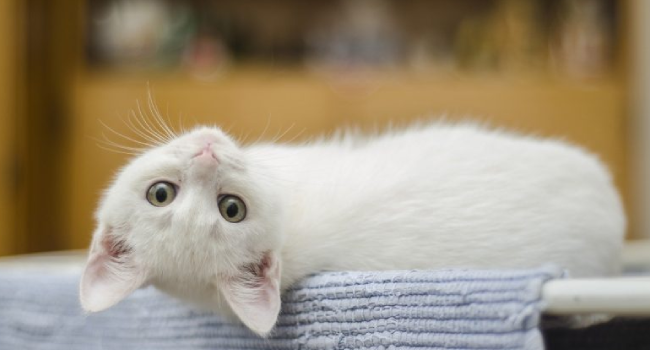Cats are curiously strange creatures, but none the less adorable in every way. Just like dogs, they have their own ways of expressing their feelings to you and others. I’m sure you have come across a cat in passing. You know when a cat walks up to you with its fuzzy little face and
swishy tail, and rubs its body on you? That is often a sign of affection. There are plenty of cat behaviors to look into so let’s jump in.
- Purring: Purring is most often taken as a sign of relaxed behavior. Your cat is probably its most content when purring. However, it can be synonymous with sickness and stress. Cats calm themselves with the act of purring as it releases endorphins.
- Kneading: Kneading is also a sign of positive emotion. When kittens are feeding, they paw the mother to stimulate milk release. Doing this as an adult cat can bring back fond memories and pleasure.
- Belly Up: When a cat reveals its underside, it is in its most relaxed state. That is the most vulnerable position. You know your cat feels safe around you if they do this.
- Gifts: Ever have your cat bring in surprise gifts for you? A dead mouse or bird? It might be unsettling, but it’s a natural hunting instinct.
- Cheek Rubs: There are many scent glands on a cat’s face; the mouth, chin, and cheeks are all gland areas. When they rub their cheek against you or furniture, they are “bunting” or rubbing their scent on their claimed territory.
- Scratching: To sharpen the claws and leave scent trails, your cat will scratch common areas. Cats have scent glands on their paws, so it is a common behavior to scratch. If you don’t like furniture scratching, invest in a scratching post in an open area of your home.
- Meowing: Meowing can mean a plethora of things, from anything like “feed me” to “I want outside.” Owners generally learn to interpret their cats specific meows. It’s just their way of communicating with you. If you want a comprehensive list of potential cat meows and meanings, check out this link.
- Tail End: Cats will present their behinds to owners they trust. Like dogs, cats will allow other cats to sniff them with a raised tail as the “okay.” If your cat does this to you, they are presenting themselves for affection and pets.
- Rolling: Rolling is a grab for attention as well as a scent marker
- Sitting in Boxes: One of the funniest behaviors goes to this one. Cats LOVE boxes. Small spaces. You know you’ve seen photos all over the internet of cats in boxes. What’s really up with that? Confined spaces are safe, warm, and protected on all sides. Great for sleeping, but also hunting or hiding. Cats are natural hunters. A cardboard box offers a place to sit and wait quietly with no opportunity to be snuck up on. No surprises. A quiet place for careful observance. Additionally when a cat is nervous, they often like to hide from view. Bingo. Cardboard box. If you want an in depth study on cats and boxes, Purina has a great article for that purpose.
This list barely scratches the surfaces of cat behaviors, but it’s a great start for new cat owners and those interested in feline behavior. If you’re still have trouble understanding your cat, ask a fellow cat owner or your local vet. If you need some quick advice, Purina or American Kennel Club is a great place to start. If all else fails, pick up a cardboard box from the store or garage and enjoy the entertainment.


